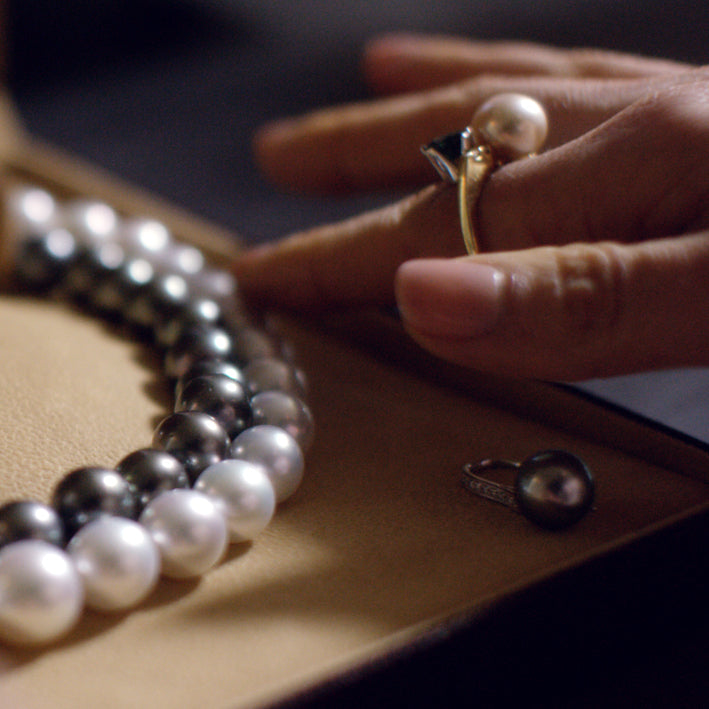
As natural pearls were so rare and prized, during the XVII and XVIII centuries scientists in France, America and Sweden, tried to help nature. Most notably the Swedish naturalist Linnaeus in 1748, studied how to aid pearlsform in a mussel, with muted success.

The heart of pearl culture technology
I’ll get by with a little help from my friends - In 1907 Tatsuhei Mise & Tokichi Nishikawa discovered independently and simultaneously the secret of seeding a nucleus into a living oyster. They each applied to patent aspects central to pearl production. Upon seeing each other’s patent applications it was clear they had both reached the same conclusion so they signed the Mise-Nishikawa agreement – which is to this day the heart of pearl culture technology.
Hot on their heels
The following year, in 1908 Mikimoto applied for a patent to produce full pearls, he had already been granted a patent in 1896 to produce half pearls, or Mabe pearlswhich are akin to the nacre covered “sleeping policemen” half pearls described earlier. When Mikimoto became aware of the Mise-Nishikawa patented method, he altered his own patent so as not to invalidate it, and bought rights to use the Mise-Nishikawa method. Mikimoto then began an unprecedented expansion of cultured pearls and left Mise and Nishikawa’s names for the history books.
 Left - Freshwater Pearl Drop on 18ct Gold Necklace Right - Mabe Pearl Stud on Sterling Silver
Left - Freshwater Pearl Drop on 18ct Gold Necklace Right - Mabe Pearl Stud on Sterling Silver
Kokichi Mikimoto turns the pearl market on its head
Born in 1858 he was the son of noodle and vegetable vendors, and had a dream that every woman should have the opportunity of owning a pearl necklace. An outrageous dream at the time, as a natural pearl necklace cost half a million dollars in the 1900’s; yet this dream inspired him to change the pearl industry for good. Within a few decades, he had almost achieved his dream; pearls were more accessible than ever before. At the time of Mikimoto’s death aged 97, a strand of his own brand cultured Akoya pearls that cost $100, was to the untrained eye remarkably similar to a natural pearl strand worth ½ million dollars.

A pearl crusade when Mikimoto began his to produce cultured pearls, they were viewed as “fake natural” pearls, but within a few years the best jewellers in the world recognised them for their individuality and beauty. At one point Mikimoto produced 75% of the world’s demand for cultured pearls.
Each pearl is individual
It is important to remember that cultured pearls, although aided to start their existence, are completely independent and man has no control over their eventual size, shape, colour or even whether they survive. Each pearl whether cultured or natural is truly individual.

Follow us on Instagram, Facebookand Twitter for more inspiration.



















